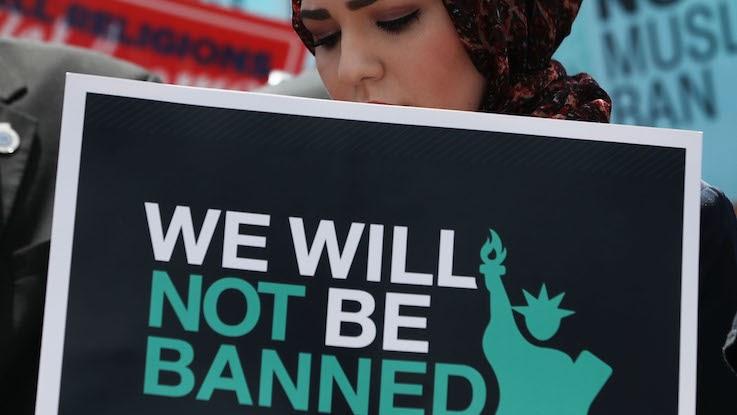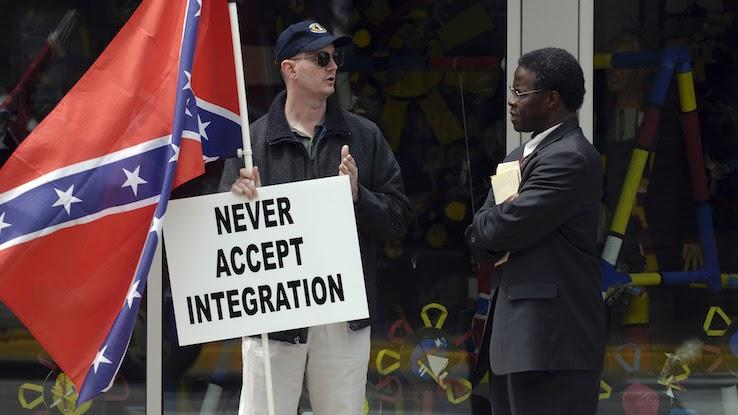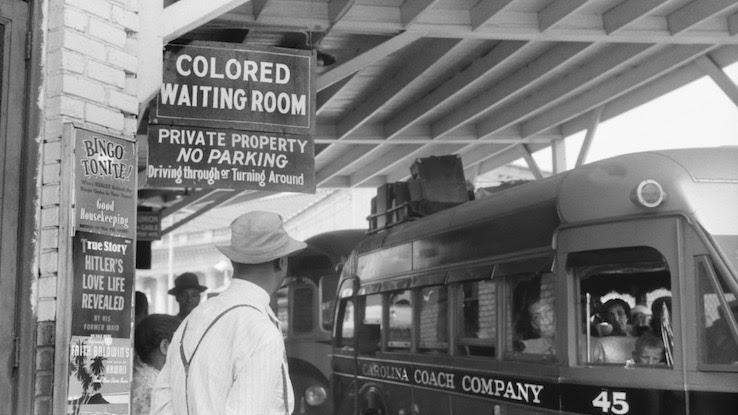The Intersection of Work and Family Life: the Role of Affect

In the wake of George Floyd's horrifying murder and the resulting protests decrying both police brutality and the institutional racism that has paved the way for that brutality to persist, at present more than ever information technology'south important to understand what racism looks like and how it affects the everyday lives of people of colour. Racism isn't limited to the overtly bigoted actions that we notice people taking or see in news headlines. It exists in covert forms that affect every aspect of people of color's lives — and go largely unnoticed by the privileged groups that benefit.
Racism is insidious. It poisons every level of society and harms people of colour on a daily basis. It dictates how various organizations and structures operate and how we treat one another. This is unacceptable, and information technology needs to change. Understanding what racism looks like and how it impacts people in everyday life, whether it's coming from individuals or institutions, is an important first step in working to dismantle the systems that perpetuate racial inequality.
What Racism Is — and What It Isn't
To larn how racism affects people, it'due south essential to know what it is. Racism isn't just prejudice — having a discriminatory attitude based on incorrect assumptions near different races. Racism also involves power — the ability to dictate and command outcomes. It comes from privileged groups and institutions that uphold their own social, political and economic advantages while actively harming people of color and limiting their access to opportunities. When a privileged group of people exercises ability over another group based on peel color and perceived differences between races, that's racism.

Particularly in the Western world, white people concur this privilege and ability, and institutions systematically favor whiteness. When someone makes negative assumptions most white people and treats them differently based on their whiteness, though, it'southward an example of racial prejudice; it is not racism. This is because there's an underlying ability construction in the Us that perpetuates the privileges of whiteness on a widespread, systemic level. "Expressions of racial prejudice directed at white people…do not have the power or authority to affect the white person'south social/economical/political location and privileges," co-ordinate to the Alberta Civil Liberties Research Centre — but white people's expressions of racial prejudice do have the power to affect other races' privileges. Power is a defining element of racism, and without it, an individual or grouping cannot be racist.
Racism is embedded in a variety of levels throughout society. One of the most recognizable is in person-to-person interactions. Private racism refers to one person'south racist beliefs and behaviors and their own personal prejudices. When someone from a privileged group expresses those personal racist beliefs to a person of colour or bases their deportment toward a person of color on that person's race, they're demonstrating interpersonal racism — racist deportment that occur between individuals.

This might look similar using a slur, avoiding a person of color in a social setting or even committing an act of violence against the person, such as vandalizing their home. Or, it might look like a landlord refusing to rent to someone considering of their race. It might exist equally overt as a hate offense or as subtle as a comment during a dinner party. Whatsoever time an individual with privilege treats an private of another race differently based on negative assumptions they hold about that person'due south race, they're expressing interpersonal racism.
When people of color are exposed to and victimized by racism, they may begin to internalize it. This means they "develop ideas, beliefs, actions and behaviors that support or collude with racism," explains author Donna K. Bivens. Consciously or unconsciously, people in marginalized groups begin to accept the negative stereotypes and beliefs order as a whole holds about them because those ideas are so pervasive — and because people of color may, equally Bivens elaborates, be "habitually rewarded for supporting white privilege." This punishment-advantage cycle tin reinforce racist beliefs a person of color holds about themselves and their race while likewise causing them to believe that white privilege is deserved.
These types of racism don't course in a vacuum. They're reflections of the fact that society as a whole, and the institutions operating within information technology, take been designed to produce racially inequitable outcomes that favor white people.
Institutional Racism: Organizational Policies and Practices
Racism doesn't merely come up from individuals. Information technology'southward been codified into policies, procedures and practices of various institutions in American society — institutions similar the healthcare system, housing markets, the criminal justice system and education systems. These institutions don't require individual racist acts to take place in society to produce racist outcomes. Instead, the institutions have policies in identify that, when followed, result in discriminatory treatment of people of color or remove people of color's admission to opportunities.

The act of following and enforcing these policies and rules is what results in racism — the person carrying them out doesn't have to explicitly concur racist ideas. That's considering the rules themselves are written in ways that are directly harmful to people of color. They're also carried out in ways that disproportionately harm some racial groups while helping others. When institutions, organizations and workplaces have policies in identify that favor white people or reinforce racist standards, and when white people dictate and enforce those policies, information technology's institutional racism.
Institutional racism has existed in the Usa for centuries because of the racist laws and rules that allowed it to develop and spread. Slavery, the creation of Native American reservations, segregation and Jim Crow laws, Japanese internment camps and the State of war on Drugs are all examples of historical institutional racism considering they targeted, punished and harmed people of color based on race. As policies and laws, they also prevented people of colour from accessing the same opportunities in gild that white people were afforded. These institutions resulted in the racial stratification that caused (and yet causes) major inequality and disparities in people of color's ability, every bit a group, to obtain or maintain the same quality of life every bit white people.
Institutional racism persists today, despite the passage of various laws that made bigotry illegal. Policies still exist that create dissimilar outcomes for unlike racial groups instead of similar outcomes for anybody. But what does everyday institutional racism look like now?
Information technology looks like the disproportionate criminalizing and policing of Black communities — like the Minneapolis constabulary using force against Blackness people at 7 times the rate they apply force against white people.
It looks like not hiring people of color who are qualified for jobs — similar only 10% of Black candidates getting called in for job interviews, and so 25% of those candidates afterwards being chosen in after removing references to their race from their resumes.
It looks like failing to ensure minority groups accept equal admission to high-quality healthcare — like Blackness people in some areas of the United States dying of COVID-19 at much higher rates than white people.
Information technology looks like people of color, and Blackness people in item, being prevented from gaining political power — like systematically turning Black voters away from state polling places for decades. When multiple institutions collectively maintain racist policies and practices in this way, it leads to systemic racism.
Structural or Systemic Racism: Culture and Club every bit a Whole
When institutional racism is ongoing, when it persists for decades among many organizations and eventually becomes ingrained in society, systemic racism results. As institutional racism persists, people of color are deprived of opportunities repeatedly. This tin cause them to fall into generational poverty and observe it hard or impossible to seek and obtain opportunities considering their access is intentionally limited.

As these conditions endure, society's narrative about these racial groups shifts. Society as a whole begins framing people of color as responsible for their circumstances instead of acknowledging that the racist policies of the institutions that exploit those groups are responsible. Members of a society may brainstorm to accept as fact the idea that cultural deficits inside Black and other communities are the cause of poverty and related circumstances. They arraign the victims of a society that was ready to deprive those victims of rights, opportunities and access to resources from the beginning, when institutions are really to blame. When this racism becomes ingrained in multiple aspects of social club and culture, it's systemic racism.
Systemic racism is especially insidious considering it touches almost every aspect of a society, from civilisation to politics to economics to history; information technology's so widespread that it'southward inescapable. I of the defining features of systemic racism is that the notion of white superiority becomes then normalized and entrenched on then many levels of lodge that people may hardly find it. It is and so securely woven into the social fabric and has persisted so long that people think "that'south only how it is." Systemic racism involves a combination of a historical foundation of racism, institutions and policies that reinforce racism, and a civilization that allows racist ideas to replicate — in result legitimizing that racism.
In everyday life, systemic racism looks like blaming victims of oppression for their oppression. It looks like valuing white lives more than other lives. It looks like generations of different life outcomes for people of color and white people based on inequalities in their admission to power, their treatment and their admission to opportunities. And it looks like not questioning any of this, like accepting it because we've never known annihilation different — because this racism is so chronic and pervasive. In everyday life, systemic racism looks similar the United States.
Every bit long as systemic racism is allowed to continue, to exist unfettered in a shadow earth without our agile efforts to admit information technology and work to reverse it, marginalized groups will go along to suffer. Racist individuals are a symptom of systemic racism, and it is systemic racism that needs to be actively demolished for us to make progress and to deliver justice. It will take years. It will accept major policy shifts. It will have change on every unmarried level of society. And information technology will be and so incredibly worth the fight.
lunsfordconand1977.blogspot.com
Source: https://www.reference.com/world-view/racism-looks-like-everyday-life?utm_content=params%3Ao%3D740005%26ad%3DdirN%26qo%3DserpIndex
0 Response to "The Intersection of Work and Family Life: the Role of Affect"
Publicar un comentario